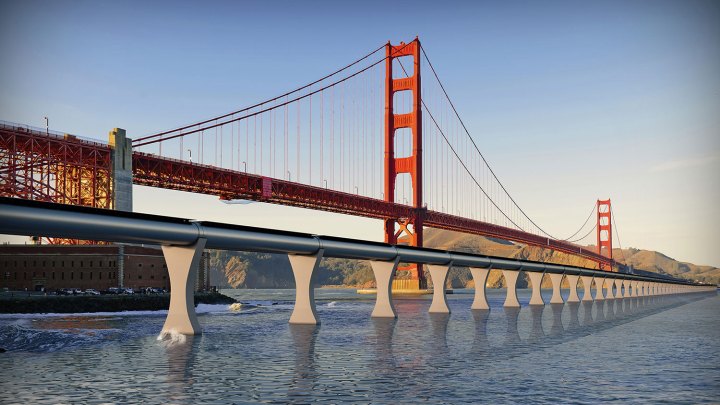
While the technological challenges to create the bones of the system are undoubtedly huge, one of the companies working to make Hyperloop a reality is thankfully also considering passenger comfort during those high-speed trips.
Hyperloop’s design means there’ll be no windows along the tube or built into the passenger pods. However, Hyperloop Transportation Technologies (HTT) suggests augmented reality (AR) technology could offer a view of the outside world for riders interested in watching the scenery blur by at breakneck speed.
The system could also help to reduce any feelings of claustrophobia brought on from being cooped up inside a windowless tube, allowing for an altogether more comfortable trip.
Addressing an audience at South by Southwest over the weekend, HTT boss Dick Ahlborn elaborated on the “augmented window” idea that he first mooted earlier in the year, suggesting it could go a lot further than a straightforward view of the passing landscape.
“Psychologically, it’s really important to have the possibility to look out of the window, but also it’s an experience,”Ahlborn said. “Imagine, you can be in a virtual world and travel through Jurassic World [or] Terminator land.”
The displays, which are being developed in collaboration with German AR firm Re’flekt, could also provide passengers with ride information such as speed, distance, and maps.
“I think traveling sucks, our goal is to make traveling suck less,” Ahlborn told the audience.
The idea for Hyperloop came to Elon Musk after California’s plan for a high-speed rail system left him feeling distinctly underwhelmed. The entrepreneur has handed development of the project to a number of other firms such as HTT, while his SpaceX team concerns itself more with marketing the project and encouraging other interested companies to take it forward.
Hyperloop’s proposal involves high-speed above-ground transportation tubes between between LA and San Francisco. Magnetic accelerators would help propel passenger pods through the tubes at high speeds that engineers say will cut a trip between the two cities from around six hours (by car) to just 35 minutes.
Discover more about Hyperloop by checking out DT’s handy in-depth guide here.


